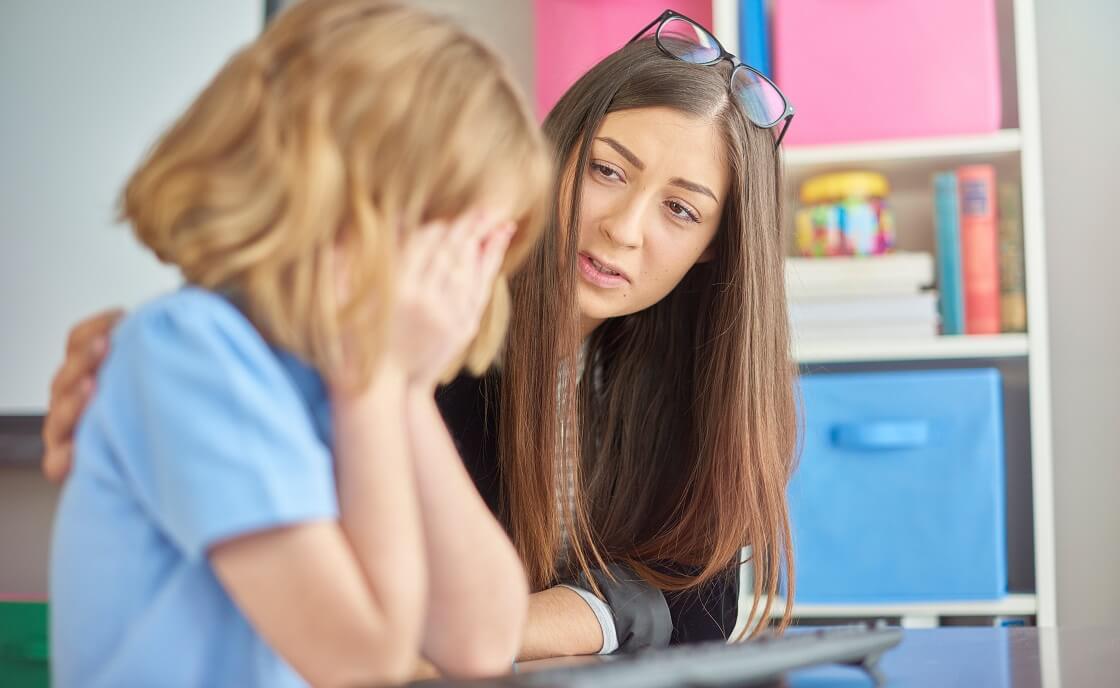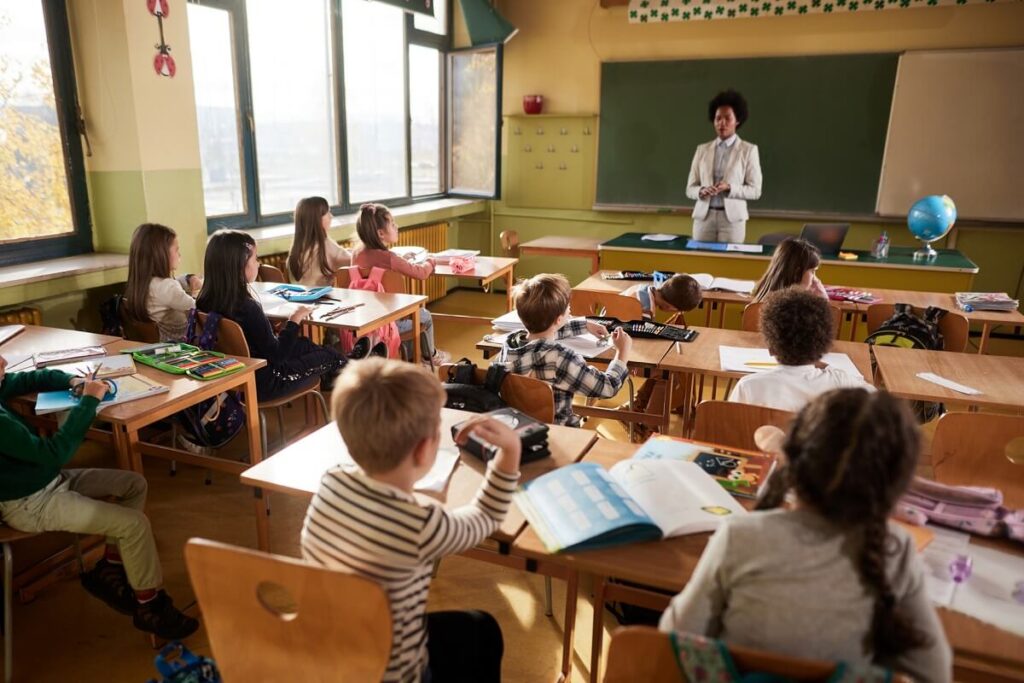In recognition of World Mental Health Day on October 10, 2022, it is important to highlight how trauma has changed for students and educators in the past few years due to unprecedented social changes, and how schools are adapting and improving their trauma-informed practices.
Understanding Trauma
Research indicates that trauma can negatively affect learning, motivation, memory, and focus for students. Prior to the COVID-19 pandemic, more than 60% of children experienced some type of trauma. According to the Texas Education Agency, in a class of 24 students, about 4 will have mental health challenges that prevent them from succeeding in school in some way, about ½ will have been exposed to at least 1 traumatic event, and about 10% will have been exposed to 3 or more traumatic events.
Many children and teens experience adverse childhood experiences that result in long-term issues with academics, relationships, and health. These experiences include sexual, physical, or emotional abuse, neglect, witnessing domestic violence, loss of a loved one (homicide and suicide are particularly traumatic), mental health issues of a loved one at home, and/or substance abuse issues at home.
Recent events have not only worsened trauma for students (and educators), but they have changed what trauma looks like. Most people suffered some adverse consequences from the COVID-19 pandemic such as social isolation, school closures, financial hardship, stress, anxiety, and health issues. While lingering effects may still impact our social interactions, school, work, travel, relationships, and health, others will have life-long trauma effects.
During the pandemic, many students suffered extreme trauma at home including increased abuse, substance use, violence, illness, death, and mental health issues. Approximately 70% of students in public schools have needed mental health services at school since the start of the pandemic with about 76% of teachers reporting that students are exhibiting symptoms of depression, anxiety, and trauma.
Approximately 70% of students in public schools have needed mental health services at school since the start of the pandemic.
In the past few years, there has been a considerable increase in civil unrest and social injustice that has caused even more significant trauma for Black, Indigenous, People of Color (BIPOC). While disproportionality in education, employment, health care, and the justice system have been prevalent for many years, the pandemic has led to what The National Child Traumatic Stress Network calls a “crisis on top of a crisis” for people of color. Race-based violence, injustice, and discrimination can trigger additional mental health, behavioral, and learning problems.
Symptoms of Trauma
Trauma is not a one-size-fits-all problem. There is no one-way to respond to trauma and age, race, gender, culture, community, social status, and school climate can dramatically affect how students respond to it.
Some ways to identify trauma is to look for changes in a student’s health, social relationships, and behavior. This can include fatigue, aggression, irritability, tardiness, absenteeism, concentration and focus problems, low self-esteem, hyperactivity or inactivity, defiance, alienation from peers, and/or high-risk behaviors (e.g., sex, substance use, violence/bullying). Trauma changes social-emotional behaviors, academic performance, relationships, behavior, and mental and physical health. If you see these symptoms in your student, it is important to encourage a mental health screening and refer to counseling and other services in your school.
There are also things that you can do to improve the student’s experiences at school as they work through their trauma. In adult life, consistent or repeated trauma can lead to poor health, mental health issues, substance abuse, violence, unhealthy relationships, unemployment, and incarceration.
There is no one-way to respond to trauma and age, race, gender, culture, community, social status, and school climate can dramatically affect how students respond to it.
Trauma-Informed Education
While most schools work to provide a trauma-sensitive or trauma-informed environment, the school environment can cause trauma, worsen trauma, or re-traumatize a student. A common measure of trauma in schools is the use of the Adverse Childhood Experiences (ACE) score. This score has been shown to be correlated to decreased academic success, poor mental and physical health, and decreased educational and occupational opportunities.
While this provides some information to educators, the ACE does not take other important contributing factors into consideration such as income, race, gender, sexuality, or other systemic disproportionalities that can magnify trauma. By not recognizing these other factors, schools are failing to recognize all the components that make up the student and their trauma. While typically not intentional, this can re-traumatize the student or cause additional trauma. By recognizing injustices that face these students and making changes to eliminate them in the classroom, educators can more fully practice trauma-informed education. Simple efforts such as choice of curriculum materials and activities can trigger re-traumatization for some students.
When students are given the opportunity to discuss and address injustices, or to discuss traumatizing situations such as biases, micro-aggressions (i.e., statements or actions that discriminate against an individual in an indirect, subtle, or unintentional way), bullying, violence, social opportunities, substance abuse, loss, healthcare, or interactions with the justice system, they are more likely to feel that they are noticed and important, and are less likely to experience re-traumatization in school.
By recognizing injustices that face students and making changes to eliminate them in the classroom, educators can more fully practice trauma-informed education.
Trauma-informed education is not about fixing a broken student, rather it is about understanding what they are going through and the social structures around them that can impact their trauma. Punishment for inappropriate behaviors can often lead to more problem behaviors and re-traumatization. While students need boundaries and clear expectations, it is important that they can experience consequences that give them the opportunity to learn and grow.
Being trauma-informed does not make a teacher responsible for being a therapist or treating trauma and associated issues, but it is about creating a safe, supportive, and culturally sensitive learning environment where the student can give what they can give on a particular day. One of the best ways to start your journey toward being more trauma-informed is to work on relationships with your students and to nurture their social-emotional development, as well as their academic development.
Part of providing a trauma-informed educational environment is to integrate Social-Emotional Learning (SEL) into the learning environment. This can help in supporting self-regulation, coping, resilience, positive social behaviors, self-management, cultural competence, and relationships. SEL should be universally available to all students at all tiers of support including students with disabilities. SEL needs to be incorporated pro-actively by providing curriculum and skill-building opportunities to all students to prevent problems associated with poor SEL skills. In addition, SEL should be used to mitigate some of the negative effects of trauma and help students to feel safe and supported.
Balancing academics with SEL, building relationships with students, understanding your own biases, acknowledging injustices, promoting resilience, encouraging parent/caregiver engagement, partnering with mental health providers, and incorporating SEL can help build a safe, productive, and inclusive classroom.
Recognizing the symptoms of trauma and implementing trauma-sensitive and trauma-informed practices can not only help your students succeed, but can also reduce behavioral challenges, absenteeism, and improve motivation and engagement.
Getting Help
Hotlines for Survivors of Violence and Trauma, Trauma Informed (traumainformed.org)
SAMHSA’s National Helpline, SAMHSA (samhsa.gov)
References
The Impact of Trauma on Education, Khiron Clinics (khironclinics.com)
Types of Trauma, Manitoba Trauma Information and Education Centre (trauma-informed.ca)
COVID-19 Pandemic and Racial Trauma Have Caused Unprecedented Disruption Among Youth – School-Based Supports Can Help Address Mental Health Concerns, National Academies (nationalacademies.org)
How Childhood Trauma Affects Students and What Schools Can Do, (tasb.org)
How Trauma Impacts School Performance, Mental Health America (mhanational.org)
When Schools Cause Trauma, Learning for Justice (learningforjustice.org)











